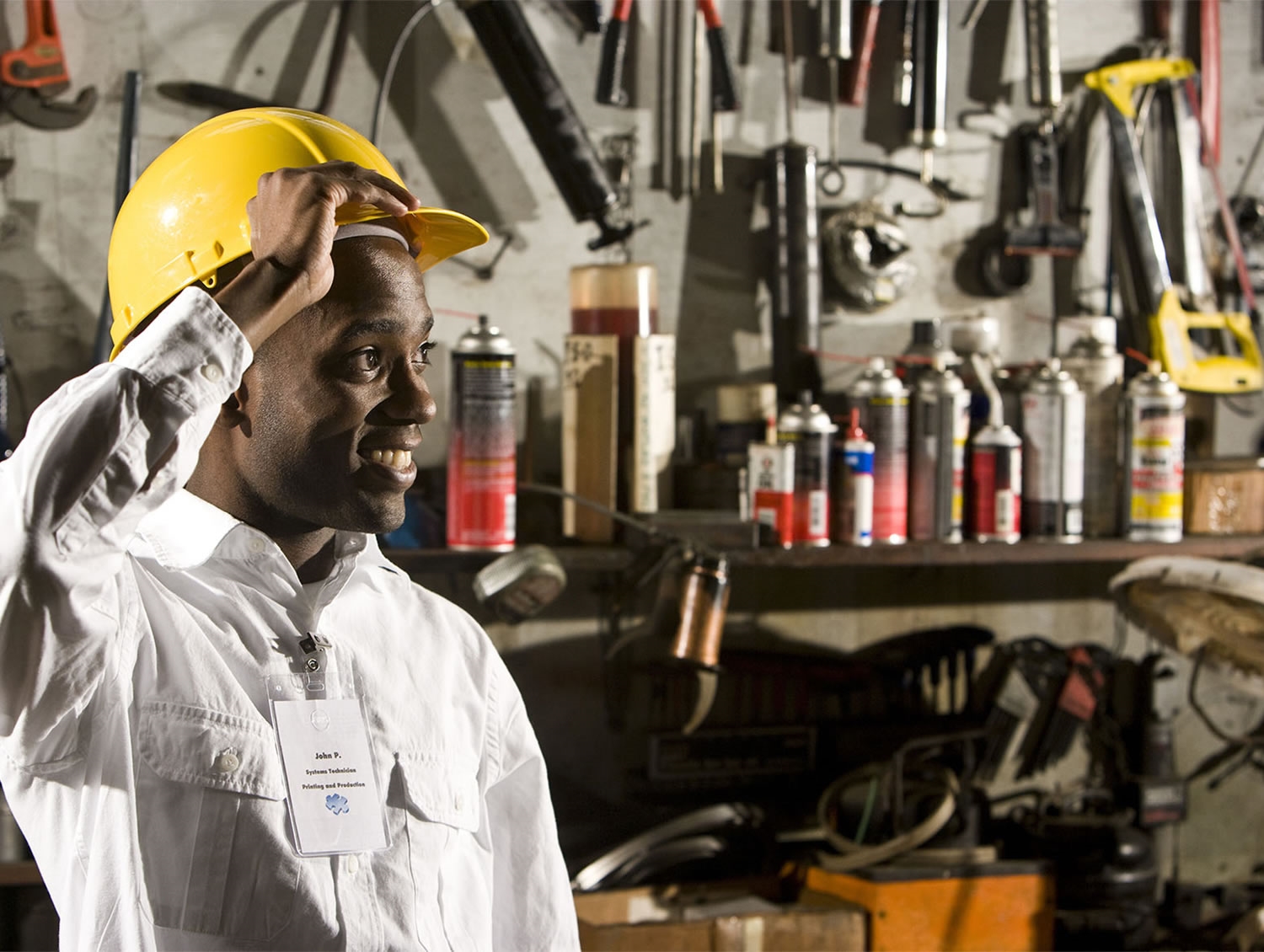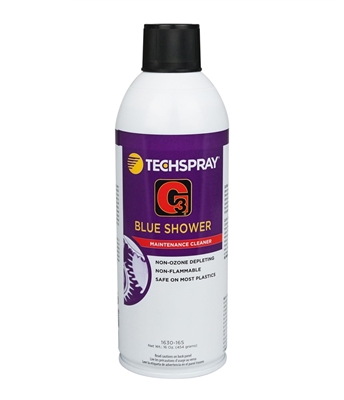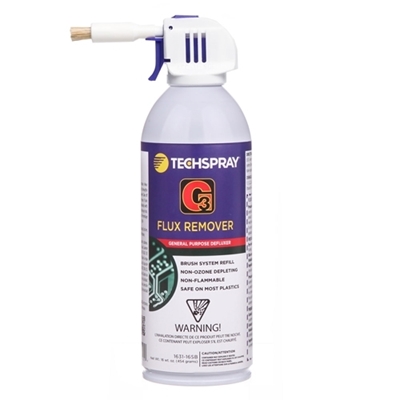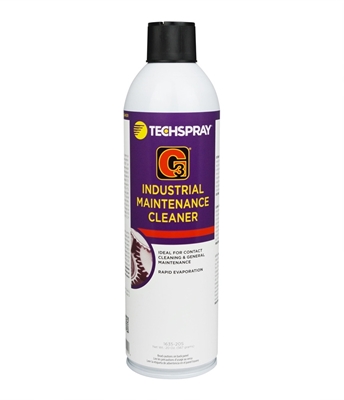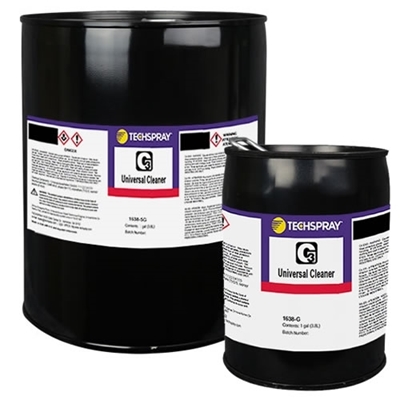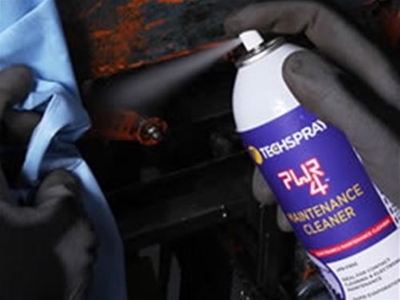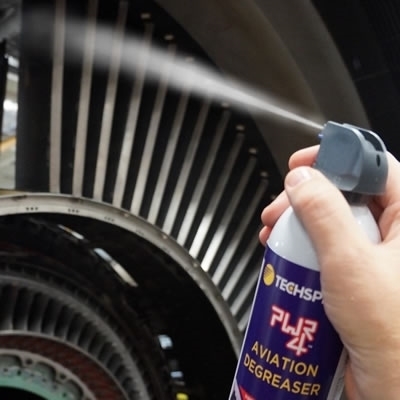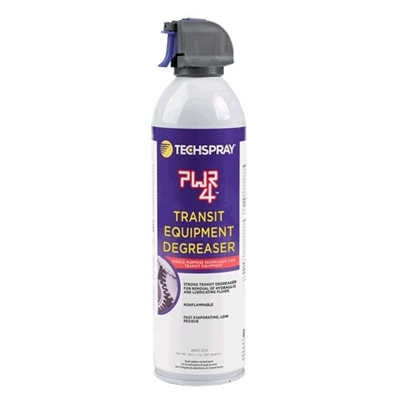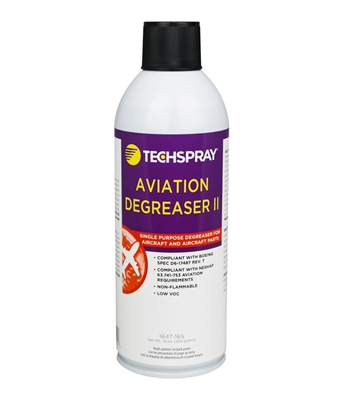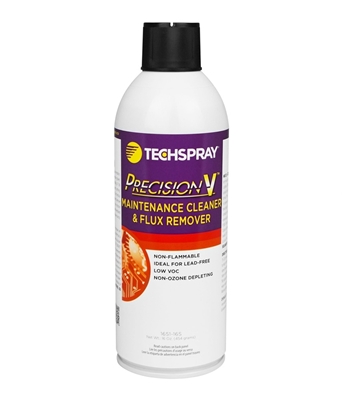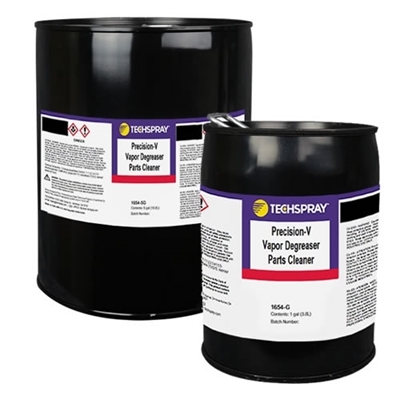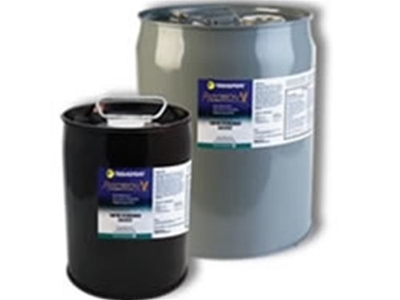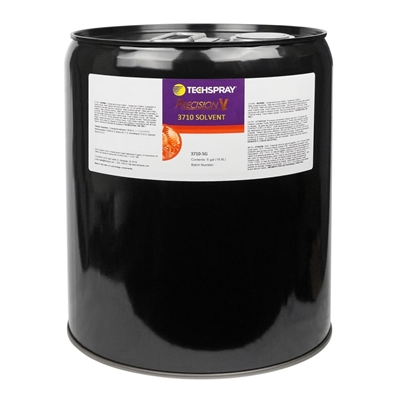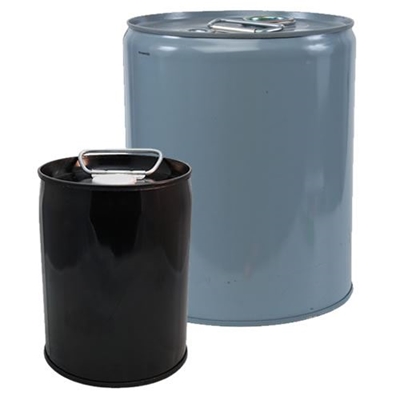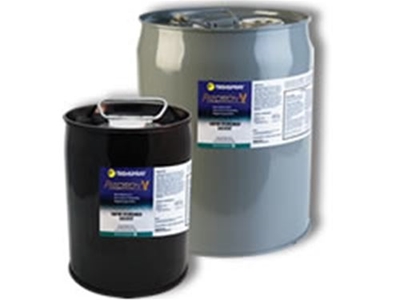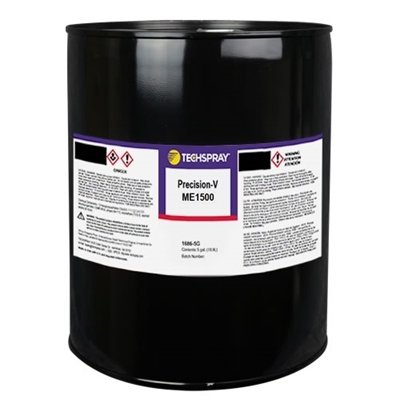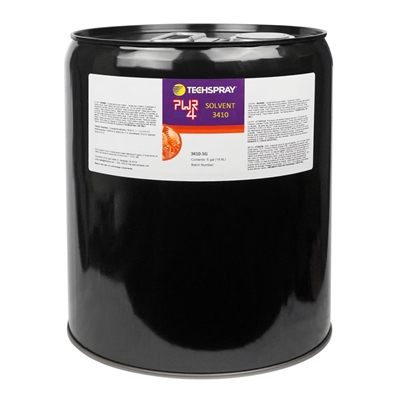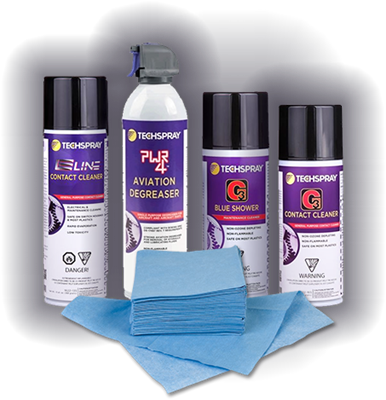Replacing n-Propyl Bromide (nPB): What You DON'T Know CAN Hurt You
(transcript from video)Welcome to our webinar, our Techspray webinar is replacing n-propyl bromide (nPB), which you don't know can hurt you. We're going to be going over issues with n-propyl bromide, and how to identify and qualify replacement as efficiently as possible. You guys aren't chemical experts, at least I assume you're not. There may be a few out there. So the idea is to arm you with whatever you need to be able to work with the experts to find a solution. Without going back and forth, back and forth we're going to give you the tools you need, the information you need to work with these guys, including us of course. We want you guys to work with us.
Introductions
So now for some introductions first of all, we have Pierce Pillon. Pierce Pillon is our main speaker today. Senior Field Engineer and he was managing our lab for about 18 years. He's been doing this a long time, but now his job is to get in the field and help all of you out. So take advantage of that. That's what he's there for. He flies all around the country, solving problems. And Pierce actually started about six months before me so we've been both at it for about 18 years.
Before that he worked for a petroleum industry at Chevron Oil. He's very active in SMTA and IPC, having served on various boards and committees. In addition to speaking at conferences, he's also served as executive capacity for the Southern Aerosol Technical Association or SETA.
I'm Kevin Pawlowski and I'm in marketing, but I'm also your application specialist. So if you call in, if you email, if you chat, generally you're going to be talking to me and like I said before, I've been at it for a while, I've seen a lot of places. I've been all over the world looking at different applications of our products. So I can generally give you a lot of good information. If it gets too technical, of course, then I'll bounce it over to Pierce. So we work together all the time. With that, let's turn it over to Pierce.
n-Propyl Bromide (nPB): What is it?
Welcome everyone to the webinar, a lot of information here I hope you find it of value, whether you're a current nPB user, or you're looking to replace that in your processes. So nPB what is it? Okay, well, you're going to hear a variety of names for the same material. It's known as nPB or n-propyl bromide, 1-Bromopropane, you'll hear as 1-BP sometimes, the solvent is nonflammable, fast evaporating, but it does have a reasonable dwell time.
And it's been shown to be effective on a variety of soils primarily, you'll see it in flux residues, greases, oils, some waxes and you'll see it as a constituent in aerosols, manual cleaning, ultrasonic cleaning and of course, vapor degreasing. It's been very popular over the years in machining facilities for parts cleaning, it's used in almost any conceivable cleaning method that you can imagine.
Notably, it's been shown to be aggressive to many elastomers, or as Kevin says here, the rubbers when he built the slides. These include seals, O-rings, you know things of that nature and some plastic substrates also.
n-Propyl Bromide (nPB): Why do people use it?
Why do people use nPB? Well, a little history, about 30 years ago or so, Freon 113, or CFC-113 was used everywhere and it cleaned everything. It was nonflammable, plastic-safe, and it was a very powerful cleaner. As time went on, they also found unfortunately, that it depleted the ozone, which was a big deal a number of years ago. And so the CFCs, or the chlorofluorocarbons as a class are the first group to be listed as ozone depleting substances by the EPA. And the CFCs were therefore banned and prohibited from use in 1994.
At that point, the market split. It split into nonflammable, critical cleaning, nonflammable, industrial cleaning segments and of course, the flammable cleaning areas. The nonflammable industrial users eventually made the move to TCE down the road due to cost. And then later on, many of these TCE users switched n-propyl bromide, due to the safety and environmental issues that were then known to be associated with TCE.
n-Propyl Bromide (nPB): Problems Emerge
Problems did emerge with nPB, in 2007, the EPA approved nPB with certain use conditions for metal cleaning, electronic cleaning, and precision cleaning. These were under the SNAP rules. If you're not familiar with SNAP, it's actually a caveat of the Clean Air Act and it stands for the Significant New Alternatives Policy program.
So, as with most things, the more we use it, the more we learn about it, and nPB was no exception. It was widely marketed as a safety solvent and it was used in almost every imaginable type of cleaning method. Now, as time went on, further studies as this happen, showed it to be a carcinogen or a potential carcinogen, and along with negative effects on neurological and some reproductive systems.
Now, back in the day, it was somewhat common to hear complaints ranging from headaches to short term memory loss to motor function degradation over the short term. And this was seemed to be very common in vapor degreasing operations as well as many adhesive applications where they used nPB as a carrier solvent.
n-Propyl Bromide (nPB): Toxicity
Okay, let's learn a little bit about toxicity and how that toxicity is expressed in the different forms of documentations that you'll see. On an SDS, the Safety Data Sheet, you'll see a variety of abbreviations OEL, PEL, REL, TLV, TWA, OSHA, ACGIH, don't let all these abbreviations scare you. There's a ton of agencies that study these materials and express the limits with different nomenclatures and we'll go over some of these shortly.
OEL is Occupational Exposure Limit, PEL is Permissible Exposure Limit, essentially the same different agencies just use different abbreviations on how to express that. REL is Recommended Exposure Limit, you'll see that mostly by the manufacturer of the products in the absence of other data, especially when the product is new to the market, they will put their own recommended limits on it.
TLV Threshold Limit Value that's the top limit that you cannot exceed. TWA is the Time Weighted Average that's usually for an eight hour period, which coincidentally is the usual length of a work shift.
OSHA, everybody knows OSHA, the Occupational Safety and Health Administration and one of the many things that they do is they administer and they set the rules and limits found in the SDS document. Now the SDS document is actually a federal document, it's an OSHA document. As manufacturers, we prepare this document but we have to follow those rules set by OSHA in 29 CFR which is the Code of Federal Regulations.
Lastly, the ACGIH this is not a government agency is actually a third party private agency is the American Conference of Governmental Industrial Hygienists and this is kind of the way it works. The ACGIH adopts a TLV based on their eight hour TWA studies and they're testing data. Now, OSHA normally not always, but normally adopts the recommendation values from ACGIH and then incorporate these as the limits in the SDS. So originally, ACGIH had set the eight hour TLV of n-propyl bromide as 10 parts per million. Later on, they published a what they call a NIC, an N-I-C Notice of Intent to Change or to lower that value. And after many years in 2014, they officially adopted and lowered their recommended value to 0.1 ppm. They went from 10 parts per million down to 0.1.
Now, in one of the very few cases that I mentioned, where OSHA has not followed the ACGIH recommendation. OSHA has yet after all these years, they have yet to establish a Permissible Exposure Limit. If you see in the toxicity section of an SDS, if it shows OSHA PEL, you'll always see, at least at this point, “not established”, they have never established a limit.
In many of the processes by regulation and especially in different state regulations it's hard to get down and maintain your process below 50 parts per million, even with vent hoods, spray booth where they have extreme ventilation. So if you're looking at something that is set, the limit or recommended limit is 0.1 ppm, and you can't even maintain 50 ppm, then you're probably way out of bounds for your operators and any bystanders that may be, this may all change very soon.
n-Propyl Bromide (nPB): EPA Notice
In August of this past year, the EPA released a non-technical risk evaluation of n-propyl bromide in various applications. They evaluated nPB in 25 different use conditions and out of that 25, they found 16 different specific use conditions where nPB was used that presents an unreasonable risk of injury not my words that's their words, an unreasonable risk of injury.
So now they further separated these into nine industrial and commercial uses, and seven consumer uses. Now, among all of these industrial and commercial uses of nPB, there's just common cleaning and degreasing methods, including vapor degreasing like open top in line closed loop systems, cold cleaning methods and aerosol uses.
Automotive degreasers that, such as engine degreasers and brake cleaners containing nPB were also among this list. And the list goes on, it's a pretty significant list. And if you have not read this document, I encourage you to go online and view it. It separates all of the reasonable uses and unreasonable uses where they find that there is risk of injury to the operators and the bystanders.
[for more information: https://www.techspray.com/epa-considers-n-propyl-bromide-npb-an-unacceptable-risk-for-degreasing]
Okay, as a follow-up to the summary the EPA is initiating a process to look at these unreasonable risks that have been identified in the summary. And they have two years to address each of these identified risks by rule, which means that once they publish this in the Code of Federal Regulations, it becomes law.
So just my guess, and this is just me talking off the cuff. My guess is that once this happens, you're going to see some revision of the SNAP rules and the restrictions on the use conditions regarding nPB and perhaps even some modification of the Clean Air Act itself. So that may be coming within the next two years.
Target Parameters: Overview
Where do you go from here? Are you considering replacing nPB in some of your processes? How are you going to set up the evaluation and that decision making process when you're looking at a variety of replacement chemistries? Well, hey you're in luck. We're going to give you some guidelines based on our experience on how to go about this.
Now, you may find that you need to modify our techniques and recommendation somewhat to fit your specific process and situation and that's okay. But What follows are the guidelines that we employ, and they just may not be right for everyone, but it will give you an idea of how to organize your procedures.
So what are the target parameters that you want to consider for evaluation? Well, some of these can include just what's listed here. The method of application, toxicity and emission values, the flammability of the product, materials compatibility, other specifications that you come up with that you need to review and evaluate and of course performance.
And last but not least, cost. Cost will always be a factor. Now, this may or may not be your primary concern, but it is our suggestion that you consider this cost lastly and the only reason I say that is because we've seen a number of times where a customer has during his evaluation process has written off a number of competing products that he's comparing just due to cost. Well, eventually, they find themselves boxed into a corner with no replacement chemistries. So if you find that you have more than one replacement chemistry that are fairly even in the target parameters that you set, and they're all even other than cost, well, that's a fairly easy decision to make out. However, if they're all pretty even including cost, well, then it comes down, you need to prioritize your targets, and make a risk assessment based on the priority of that.
Application Method
Let's look at the various application methods that you may be currently using. Now, each of the replacement products that you're considering are going to have their own pros and cons, depending on how you employ those products. So here's a few things to consider on each and we'll dive a little bit deeper on each of one of these in the following sections.
So for vapor degreasing, you want to compare the various physical properties of the competing products. What are the different boiling points? How will these different boiling points help to remove the soils because you'll notice that in many of the ones, the newer formulas are typically going to be lower boiling points than nPB and some of the older methods.
What type of retrofit may be required for the new chemistry? Is the unit on it's last legs? Is it worn out? Is it time to replacement them? Is your unit compliant with the regulations in your state for all of the emission controls? You know, this could be the right time to either repair or replace your unit.
For ultrasonic cleaning, compare the properties of the products under consideration. You know, if possible, choose those for comparison that you know are well used in an ultrasonic or for manual cleaning. Not all products work very well in ultrasonics and again, emissions is an issue with these models and with these methods so be sure to check all of your regulations.
Aerosol cleaning, well, as you've probably guessed, any product, any product that is aerosolized will exponentially increase the exposure of that product to the operator and the bystanders. So be aware of the ingredients, research these ingredients and research to the effects of those on your workers.
Application Method: Vapor Degreasing
Okay, now to go a little bit deeper into vapor degreasing. If you're not familiar with the process, and obviously a number of you are but for those of you that are not, it's a closed loop system and essentially it's a boil, reflux and condensation loop that regenerates that solvent or condenses that solvent and then replenishes the section that provides the cleaning area which in this case is the boil sump.
Now the solvent chemistry should be an azeotrope or a near azeotrope in order to maintain constant or nearly constant composition and stability in both the liquid and the vapor phases. This is for number one for safety and consistency in cleaning.
For the typical application, nonflammable products should always be used in a vapor degreaser. Now, compared to your current products, the boiling point will probably change in your replacement chemistries that are under consideration. In the newer chemistries that we typically see the boiling point are generally lower.
When switching to the new chemistry, it will be important to optimize your system and to achieve the best performance values and to meet your cleaning requirements. And it's very rare that you can just drop in a replacement in chemistry and use the same setup and the same cleaning parameters. Your software will need to be adjusted, your temp points, your safety cut off all that, your refrigeration levels will all need to be reentered. And we can help you with that but there's more to come on that later, as you'll see.
Application Method: Ultrasonic / Manual Cleaning
For ultrasonics, we always recommend again using nonflammable solvents, due to the possibility of emission escape that's really almost inherent in these types of units. Flammable emissions or vapors can escape, move around the area, and potentially come in contact with a heat source, or an electrical source and cause ignition.
So for various chemistries that you've got under evaluation, you want to vary the dwell time in your testing, and then that way, you can see the different results and that will help you to optimize that process for the maximum cleaning performance and your throughput. Adjusting the frequency usually is only going to be feasible by changing the model or the unit and or its transducer, it's going to be much more difficult to change the transducer. To safely and reliably change out the frequency, it's just easier to purchase a new model with the correct transducer in it.
You can consult with your equipment vendor, explain the parts that you're cleaning, as well as the chemistry that you're using and they can help you choose the right transducer option, or a different model with a different transducer option, as well as the capacities that you need for your process.
Now, increased heat input generally improves cleaning performance that's kind of a rule of thumb. However, in ultrasonics, and in other methods that you'll see that also usually increases your product loss, and it will increase the associated makeup cost.
So manual cleaning, with dip and wipe or other such methods, you will also be subject to emission loss, and then subsequent operator exposure, product loss, make up cost, so just be aware of that.
If you're looking at replacing chemistry in an ultrasonic, the bath loading is probably going to change with a different chemistry. So you should monitor that closely, you should set up some trend sheets to establish a frequency based on your throughput for replacing the liquid in that bath. And for the bath use we generally recommend a final rinse once you remove the part with a clean or virgin solvent that you utilize.
So think about it, you put the first parts in, and they come out and they're nice and clean. Well what's left is dirty solvent, doesn't mean it's loaded, doesn't mean that you can't use it but now you've got residues and particulates in that bath. So you lower your next set and every subsequent set that that solvent gets more and more loaded, more and more dirty. And that just increases the potential for redeposition of some of these soils back onto your parts as you raise them back up. That's why we recommend a final rinse with clean solvent just to remove anything that may redeposit on those surface.
Application Method: Aerosol Cleaning
It's important to look in an aerosol cleaning at the spray pattern and the variations of that spray pattern that you can use to improve with your cleaning methods. Now, some products use what we call the “fire hose effect”. Not only is the solvent in the aerosol dissolving it, but the pressure behind the jet stream or the spray pattern of the smaller patterns help to dislodge the soils at the same time. You'll see that most of these aerosol cleaners come with an “extension tube” straws, we call them. Using that can really intensify this localized effect where the spray is much more effective.
Now, again, and one question to ask is do you really need a nonflammable aerosol? Okay, of course, that's always on the wish list, but consult with your EHS team, consult with your purchasing agents. Because one area of concern, again is always going to be cost and a nonflammable product will always add a premium to the cost of that product. So if your facility is set up with proper ventilation, safety procedures, hey, a flammable aerosol might be acceptable and provide the required cleaning results.
Now, some have seen this phenomenon where the substrate gets chilled and it actually frost up, looks like ice on your board. Okay. And that's caused when you're using an aerosol product and those propellant that the gas in the aerosol that forces that liquid out of the nozzle, those evaporate extremely quickly, extremely quickly. And that causes a surface cooling effect on that board and what happens is, is it chills so quickly and to such a point that it can condense moisture from the humidity in your facility and actually it looks like little snow or frost on your components. And the way to get away from that is just back off on the distance a little bit. That gives the propellant adequate time to dissipate before they actually hit the board in trained in the liquid.
Now, some aerosols come with a brush attachment okay, so if you're using the brush attachment with the aerosol, or some other method of outside agitation like a separate technical brush that you're using to loosen the soils, a final rinse again is always recommended. Because when you're using a brush, yeah, you may be dislodging the soils and dissolving them but you're really just moving around from point A to point B, you're not getting them off the board. Once you've got everything loosened up, you're pleased with how it's looking, rinse that board or that part from top to bottom with the aerosol and that will give you a final rinse of everything off of that board.
Toxicity
First, we recommend to avoid TCE or trichloroethylene and perchloroethylene or perc. Both of these have use restrictions, that's going to affect your reviews and the process that you're organizing for these comparisons. So it's always a good idea to review the SDS, your technical documents for the products that you have under evaluation, for the various limit values that are going to affect your operations.
Replacement chemistries, we recommend those to be in the 200 plus parts per million threshold limit value based obviously on an eight hour time weighted average. So consulting with your EHS crew is always a plus, because you don't want to go through all of this testing and then now you've made your decision. And then your EHS guy comes and goes, "Wait a minute, we can't use this." So avoid hiccups like that, it keeps your EHS team in the loop.
Now, you may feel it's necessary, you can employ an industrial hygienists to do some exposure testing while you're doing your performance evaluations. That will give you some real world idea of the amount of material that you're putting into that facility and the risks involved in the new products and compared to your older products before you make that decision. Obviously, wearing the appropriate PPE is required and much of that information you can find on an SDS as well as conversations with your chemistry vendors. We can help you with that. If there's ventilation requirements, if there's a turnover right in your facility for the air that's needed your process engineering staff can help you guide you along in that.
Now, in a quick way just to simplify areas of concerned if you look there in that top picture on that label you can see some of the little pictograms, these are the same ones that are used on an SDS. Ones that you might want to be wary of is the exploding chest. That's what we call it the exploding chest pictogram. So that's just a beware.
Yeah, let me clarify that, that it doesn't mean that chemical is going to make your chest explode that's a chronic hazard. So basically, not necessarily a carcinogen, but it could include carcinogens. It's just something to be aware of, if you see it any of the n-propyl bromide products would certainly have this. And, of course, the objective is to move to a safer one, so just make sure you're not moving into another type of hazard.
Emissions
So one of the main things to realize is that the more stringent your emission requirements are, the more that's going to affect the bottom line cost to your operations. From the chemistry you choose to the equipment that you use, to the requirements on their equipment, and to the record keeping that's required by regulation. And that record keeping is incumbent on the end user, not to manufacture, you. And that's an incredible amount of time. So the less record keeping you can do the better. So you need to reevaluate and weigh the environmental benefits to the amount and the type of solvent that you choose. For example, a product may meet all the required environmental regulations but if it doesn't meet your cleaning requirements, well, it's kind of a useless product for your process.
VOCs, Volatile Organic Chemicals, the requirements vary from state to state and even among a lot of the local municipalities. Everybody has heard that term VOCs. So make sure that you check all the sources of regulations for compliance. Usually, you'll see the amount of VOC units they will be expressed in either product light percent, or grams per liter. So your EHS team can help you with that information to ensure that you're compliant in your choice. If global warming is an issue, and this might be a requirement through a regulatory rule, or an internal company policy, a lot of that information can be provided by the product vendor, that's us. But be aware that there's various additions of these figures so make sure that you're comparing apples-to-apples.
In effect, they use CO2 as a reference of one that's the baseline. So the global warming potential of your different products is based on a 100 year degradation and it's compared to the baseline which is one and carbon dioxide.
So, in n-propyl bromide as a rule and I mean, by rule, regulation is considered a hazardous air pollutant or a HAP. So if you're looking at replacement chemistries, try to avoid replacing one HAP with another, that just adds another headache to deal with. So if you can avoid less record keeping that's a plus.
If you're doing business in the EU, if you're importing materials to the EU, some of their restrictions may apply to your final assembly. I'm sure you've heard a lot of these REACH, RoHS, SVHC that's Substances of Very High Concern that's a subset of REACH. So, if your company is applicable or subject to the EU directives be aware of which of these may apply to your replacement chemistry.
Flammability
Flammability, okay so to reiterate making a product nonflammable results in premium cost to the customer. So, is that required or just desired? So, except for extremely special operations, vapor degreasing and normally ultrasonic cleaning, nonflammable products should always be used and both of those are due to safety reasons. So consult with your product and your equipment vendors as well as your safety team. Another way to compare and contrast the flammability values when doing your reviews is the GHS flammability rating that's available on the SDS documents.
Compatibility
If you're replacing one product with another it's always a good idea to run compatibility on your various plastic, seals, O-rings to ensure that there's no degradation by the new product or changes that you may have made in your process. Plastics can haze, craze, crack, dissolve. Elastomers and seals can swell, shrink, get soft, sticky, they can even be made brittle, because the plasticizers leach out. If you're using a water-based product, be aware of that corrosion can form from inadequate product rinsing, or incomplete drying on the parts.
Now, your chemistry provider can give you a good idea of what materials may be affected by the product but testing is the only way to make sure and to make that determination and we can help you with that also.
Other Specifications
These are the boiling point that's most commonly used to set up a vapor degreaser. You'll need to change a lot of your settings and that's going to determine what the settings may be. Higher boiling point actually can help remove like waxes and the waxy or heavier greases.
Surface tension is another physical property that you might want to look at that allows the solvent to flow under some of these low standoff components, in and out of weep holes on certain parts. So that's an important property of the cleanliness requirements, whether that be military performance specification, an internal SOP, it could be customer-driven. It could be a IPC specification like J-STD-001, A-610, whatever it is document that and make sure that you're comparing all of these products to the same specifications.
Performance Testing
When you're doing performance testing, you'll need to establish again what cleaning criteria and requirements are necessary. And so like I said, document all this. Generally, the variables that you're going to see in your solvent evaluation, are solvency of the product, differences between your products and solvency and the things that you can control such as time, temperature, and agitation if you have agitation like ultrasonics in your vapor degreaser or whatever.
Depending on the type of product, we recommend starting with the current parameters, if possible. And your provider can also give you some starting points based on their own product knowledge, for instance, a vapor degreaser settings on the unit will need to be adjusted to the new product. And really, that's about all you can do for that, when doing the performance testing, you'll probably need to adjust your zone time, the dwell times, your different zones, the number of cycles will need to be determined. If it's allowed your one use and your ultrasonics parameters will also need to be established.
Now the chemistry provider can generally help with the setup and the performance testing ahead of time and that can give you a good idea of where to start. And that'll save quite a bit of time on your part but that's in a laboratory setting. And it's still going to be imperative on you to test in your facility, with your equipment, with your chemistry and to remove the soils that you generate in your process because laboratory are controlled settings.
PWR-4 and Precision-V Products
Techspray has literally at least a dozen different formulas available to replace n-propyl bromide. So this is not a new issue for us. Techspray has been going after n-propyl bromide trying to move customers away from this toxic chemical, the best 20 years, so we've got a lot of experience at this.
So the first of the two main brands, if you will, product brands, is PWR-4. PWR-4 there's a maintenance cleaner, and there's a flux remover. This is going to be our closest equivalent to n-propyl bromide in terms of performance and cost. It's not really for the sensitive type of plastics, but generally speaking as Pierce's talking about if you're had this kind of plastics, you probably want an n-propyl bromide anyway. But this is going to be our highest performing option.
If you do have the sensitive plastics, or some really strict requirements in terms of environmental requirements, things of that nature, we have the Precision-V line of solvents, so then we can move you to that. Those are generally going to be more expensive, but a lot of customers as they are moving away from other chemicals and AK-225, they may have moved to n-propyl bromide temporarily. Well we can get you back into the higher precision type of cleaning so that would be with our Precision-V chemicals.
Techlab
So it's overwhelming you got to make this change to a different chemistry. You've got your full time job right? Producing whatever you produce for a living to make your revenue well we can help with that.
Techspray offers our TechLab, it's an in house application lab for qualification testing and problem solving. You got me to answer questions, you got Pierce, you've got a full lab of people to help you with it. We have a vapor degreaser on hand, we have an ultrasonic and batch cleaner so we can do in-house testing, without causing delays in your own process. So you can keep doing what you do and we can do that initial testing for you. Of course, we can do manual cleaning and aerosol as well, document the results, feed them back to you, you can duplicate in your own facility, and then we can finalize this.
We have chemists, application specialists on staff, of course, and we can even customize products this would be for a higher volume if you're using a lot of it, but we can actually do customization if it's required.
Conclusion
Don't forget, Pierce and I, our job is to make your job easier. Okay. So if you're moving from n-propyl bromide tearing your hair out, you can stop that okay, we're here to help you. We're going to answer your question and we'll be honest, right? If we're not the best solution for you, and you're looking at other things for we're going to be honest with you. The idea is we want you to land in a solution that's best for you. Chances are we've got those solutions we work really hard to do that. But we're here to consult with you and get you in the right solution.
So we got Pierce, Senior Field Engineer, so he could actually go to your facility. I'm on the phone, chat, email to help you out so please don't hesitate to reach out. So everybody, good luck with the process of moving out of nPB and have a good day.

